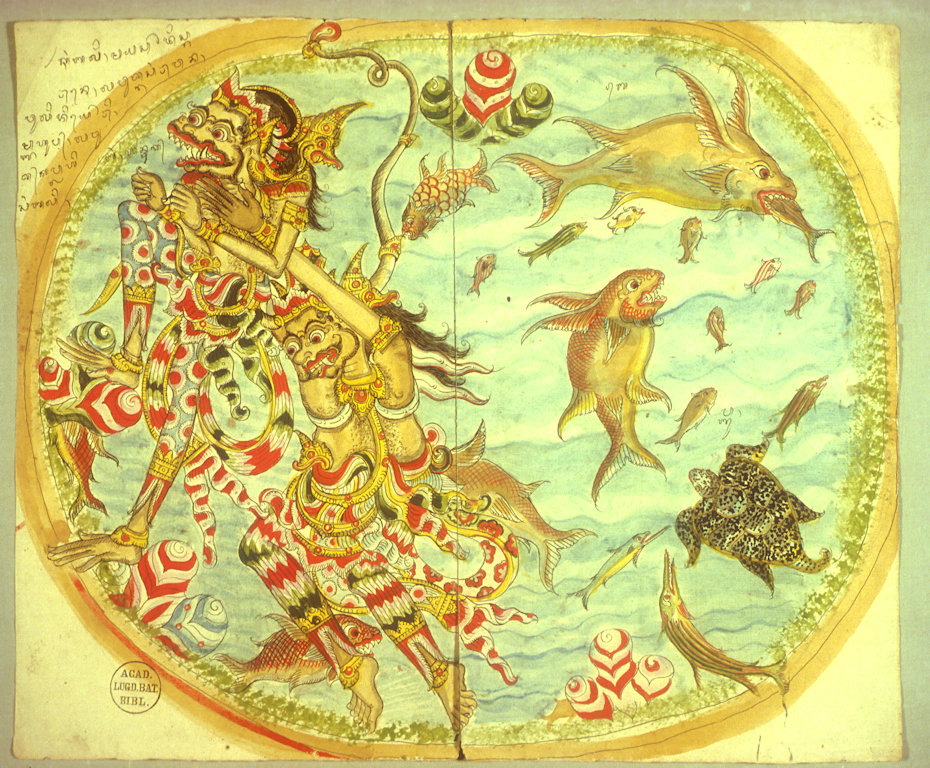KETOET GEDE, SINGARAJA,
DRAWING OF THE STORY OF KING RAWANA FIGHTING THE MONKEY KING BALI IN THE OCEAN
LOr. 3390-49
Drawing on Dutch paper, watermark Pro Patria, countermark VdL., 34 x 41.4 cm
The drawing is framed with circles of light-brown, red and green, In the frame there are blue curved lines indicating sea. At the top, at the bottom and to the left there are rock ornaments, kekarangan. Seen from above is a round basin, representing a seaside with sand, rocks and grass, while in it, in profile, two male figures and a number of fish in profile or seen from above are drawn . The combination of two types of perspective and the composition of the figures and fish is very lively and innovative.
A man with bulging eyes, long hair, a crown on his head and wearing trousers is lifting up a creature with a long tail, also clad in trousers. A big fish eating a small one is drawn at the right. Large and big fish and a tortoise dominate the centre and the right side of the drawing. Texts in Balinese script in ink are added:” pnyu”, tortoise; “”bé””, fish, “sang bali, mayasa di sgarané, lawutka sang rawana, wuli di yori, mnyahup, lawut kaplahibang, hantuk sang bali”, Bali performs asceticism in the sea, then Rawana comes up to him from behind and he is dragged along by Bali.
A struggle between Rawana and the monkey Bali is depicted that takes place at the bottomof the ocean. This scene refers to an episode described in the Old Javanese Uttarakanda 20 (LOr. 10.454: 33). Rawana goes to Kiskinda in the Southtern seas, because he wants to fight Bali. The latter is doing his prayers and having his ritual bath. Rawana approaches Bali stealthily from behind and grabs him, but the monkey, being very strong, cuts off one of Rawana’s heads. They start chasing each other. The monkey-king goes to the Western seas to continue his prayers, his ritual bathing and his worshipping of the gods, but he is followed by Rawana. Then he goes to the Northern seas, where he completes his prayers still without being slain by Rawana.
According to the Indian tradition, and also the Old Javanese text, Rawana has ten heads, but in Balinese drawings he is always depicted with one head only.

